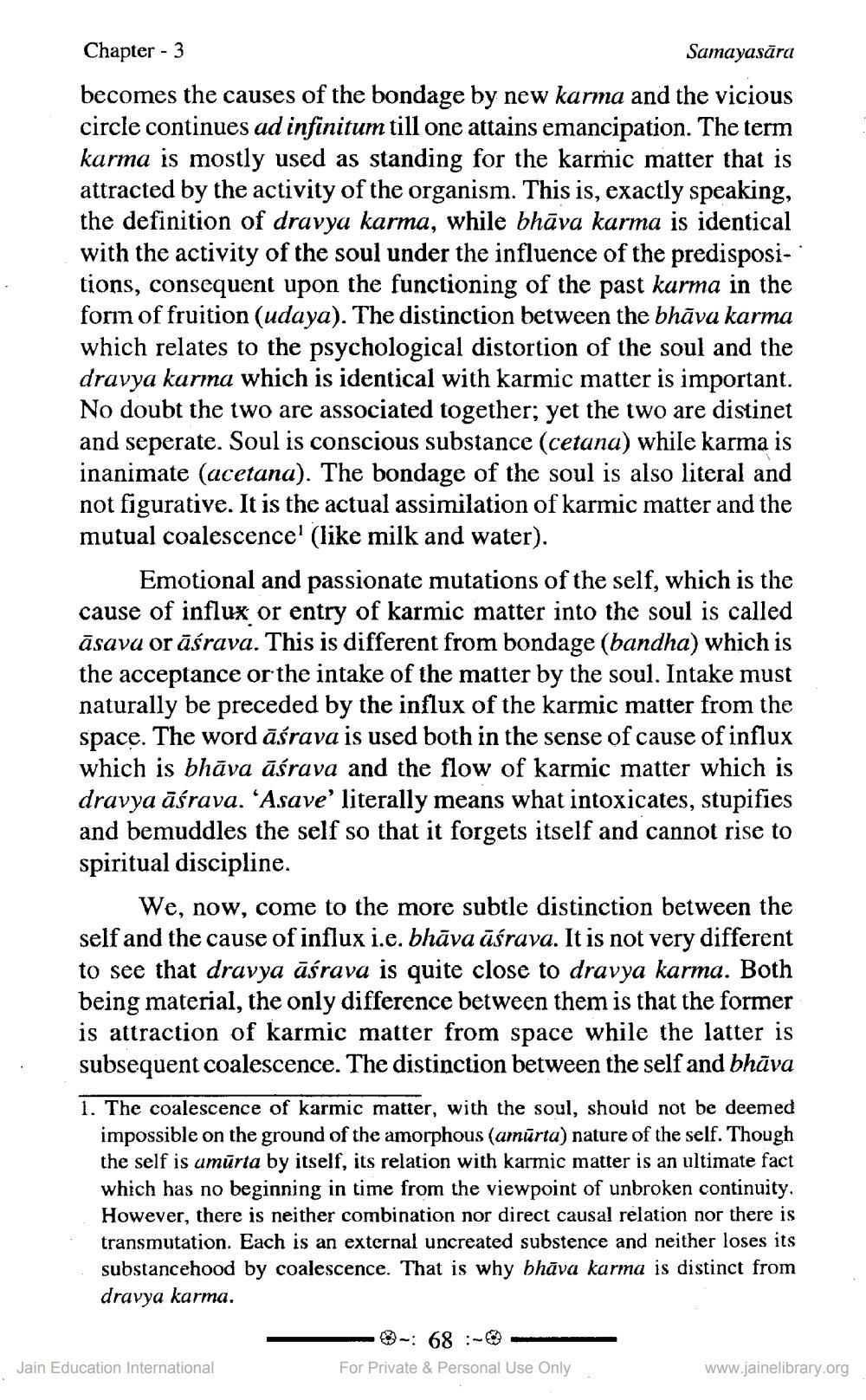________________
Chapter - 3
Samayasara
becomes the causes of the bondage by new karma and the vicious circle continues ad infinitum till one attains emancipation. The term karma is mostly used as standing for the karmic matter that is attracted by the activity of the organism. This is, exactly speaking, the definition of dravya karma, while bhāva karma is identical with the activity of the soul under the influence of the predispositions, consequent upon the functioning of the past karma in the form of fruition (udaya). The distinction between the bhāva karma which relates to the psychological distortion of the soul and the dravya karma which is identical with karmic matter is important. No doubt the two are associated together; yet the two are distinet and seperate. Soul is conscious substance (cetana) while karma is inanimate (acetana). The bondage of the soul is also literal and not figurative. It is the actual assimilation of karmic matter and the mutual coalescence' (like milk and water).
Emotional and passionate mutations of the self, which is the cause of influx or entry of karmic matter into the soul is called āsava or āśrava. This is different from bondage (bandha) which is the acceptance or the intake of the matter by the soul. Intake must naturally be preceded by the influx of the karmic matter from the space. The word āśrava is used both in the sense of cause of influx which is bhava āśrava and the flow of karmic matter which is dravya āśrava. ‘Asave' literally means what intoxicates, stupifies and bemuddles the self so that it forgets itself and cannot rise to spiritual discipline.
We, now, come to the more subtle distinction between the self and the cause of influx i.e. bhāva āśrava. It is not very different to see that dravya āśrava is quite close to dravya karma. Both being material, the only difference between them is that the former is attraction of karmic matter from space while the latter is subsequent coalescence. The distinction between the self and bhāva
1. The coalescence of karmic matter, with the soul, should not be deemed impossible on the ground of the amorphous (amūrta) nature of the self. Though the self is amurta by itself, its relation with karmic matter is an ultimate fact which has no beginning in time from the viewpoint of unbroken continuity. However, there is neither combination nor direct causal relation nor there is transmutation. Each is an external uncreated substence and neither loses its substancehood by coalescence. That is why bhava karma is distinct from dravya karma.
Jain Education International
-: 68 -0
For Private & Personal Use Only
www.jainelibrary.org




